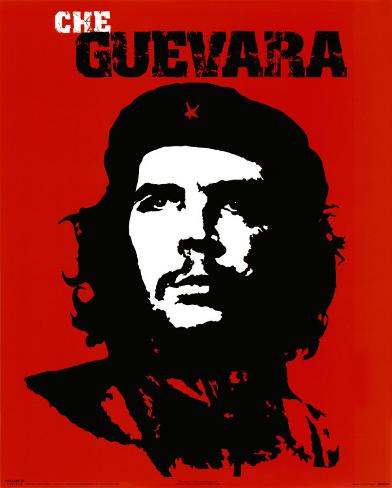
As some day it may happen that a victim must be found, I've got a little list — I've got a little list Of society offenders who might well be underground, And who never would be missed — who never would be missed!
So begins the "Little List" song of Ko-Ko, the Lord High Executioner of Titipu, from the Gilbert & Sullivan operetta The Mikado which enumerates those whom we would be better off without. People with flabby hands and irritating laughs; those who chew peppermints; spoilt children; the lady from the provinces who dresses like a guy and ....
Then the idiot who praises, with enthusiastic tone, All centuries but this, and every country but his own
Not much has changed since W.S. Gilbert penned these lines in 1885. Knaves and fools have always been with us and in a piece in the Huffington Post, Michael Gonzalez of the Heritage Foundation speaks to its latest manifestation -- the commercialization of Che Guevara.
In an article whose title gives the reader a hint of the author's sentiments -- "El Che: The Crass Marketing of a Sadistic Racist" -- Gonzales lambastes Mercedes Benz for using the Communist revolutionary leader as a brand image for a new luxury car.
There's something about Che Guevara that convinces older European men that they will become cooler through association with his "brand." We saw that again yesterday when Mercedes-Benz Chairman Dieter Zetsche launched a new car under a banner picture of Guevara.
N.b. The Mercedes logo replaces the red star on Guevara's trademark beret in the German advert.
After offering a second example of Che marketing, Gonzales speaks to the real Che Guevara -- a murderous, racist Communist thug. I agree with Gonzales' sentiments in this piece. Forty five years after his death emotional and aesthetic responses to the Che myth keep his memory alive, fanned by a healthy infusion of kitsch and commercialization.
There are on-line stores that specialize in Che merchandise, with one advertising "over 60 Shirts, Tshirts and Tees to choose from" as well as berets, baseball hats, posters and books. Perhaps if Reinhard Heydrich had a photographer as talented as Alberto Korda -- who took the iconic photo of Che found on all this dreck -- we would have Heydrich-lives websites also.
The irrational exuberance of Che devotees has a religious quality to it. One of the greater fools of the Twentieth century, Jean-Paul Sartre, described his impressions on meeting Guevara in 1959 as being akin to an epiphany.
"I heard the door close behind me and I lost, at once, all feeling of my tiredness and an idea of the time. In that office, night does not enter: in those men, in the best of them, they do not feel that sleeping is a natural necessity but a routine from which they have been liberated, more or less. I do not know when Guevara and his comrades relax.
 St Che hath no need of sleep -- his revolutionary ardor raises him above the lot of mortal men.
St Che hath no need of sleep -- his revolutionary ardor raises him above the lot of mortal men.
There is one point in Gonzales article, though, that struck a false note. After describing the Mercedes campaign, he wrote:
Years ago, an equally desperate Anglican clergyman tried to stem dwindling congregations with a poster of Guevara wearing a crown of thorns. The hip slogan? "Meek and Mild? As if."
The Anglican Church continues to, ahem, have its problems attracting people to an increasingly troubled denomination.
Actually, no that is not how it happened. I believe Gonzales has the facts wrong and his dig at the Anglican Communion comes across as a gratuitous insult. Gonzales may well be an Anglican -- if so, he might be covered under the proviso that Jews can tell jokes about Jews, Italians about Italians and so forth. But as written the line doesn't work.
What really happened? Is there an Anglican Che? Yes and no -- (a good Anglican answer). In 1999 the Churches Advertising Network -- an independent coalition of advertising professionals -- prepared a poster of Jesus modeled on the Che poster/photo by Korda as part of an Easter campaign for the Christian churches (plural) in England.
The poster was not the work of one vicar nor of the Church of England but an ecumenical effort (Anglicans, Catholics, Presbyterians, et. al.), which caused tremendous controversy at the time. Some church leaders praised the poster as being provocative, while others denounced it as being in bad taste. The furore served as a Rorschach test of sorts, allowing commentators to project their views and interpretation of the campaign (unfairly) onto the Church of England.
With few exceptions, the devotees of the cult of St Che Guevara know little about him or what he actually stood for. In his story about the fatuous commercialization of Che by Mercedes, Michael Gonzales appears to know as little about the Che Jesus campaign as the college coed knows of the man in the Korda poster decorating her dorm.
While this is an opinion piece commenting on a news story (the Mercedes Che campaign) it would have been better served by muting the snarky attitude and focusing on the facts. There is enough material from the Mercedes campaign to fill out the story without recourse to an urban-legend about the Church of England.
